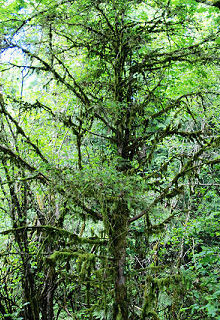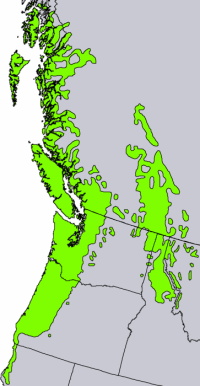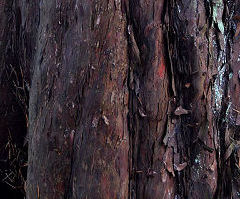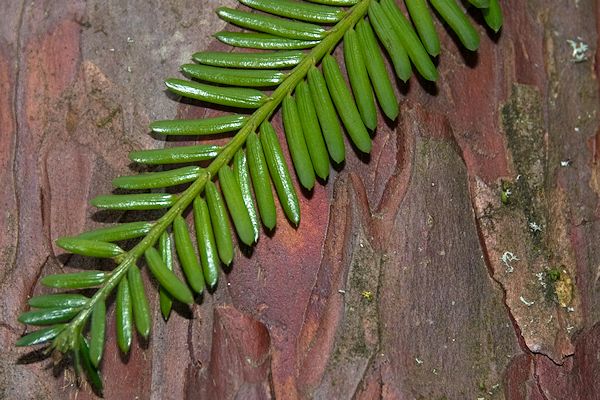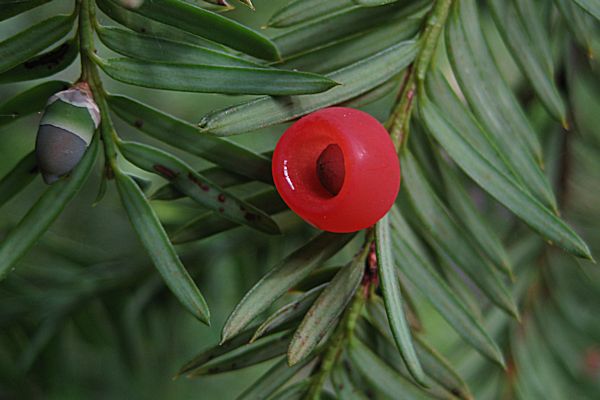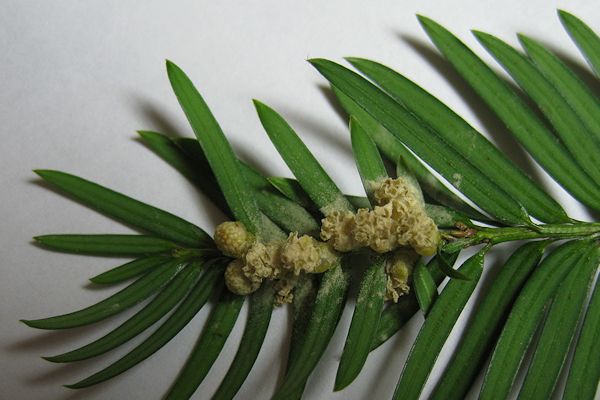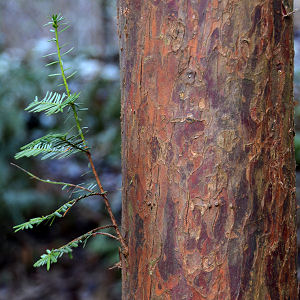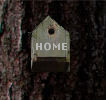 |
Northwest Conifers |
AboutAll ConifersConifersLow-elevationHigh-elevationOthersEast SideSouthwestNon-natives——————Conifer ConesIndexMore Info |
Pacific Yew – Taxus
brevifolia
|
|
|
Pacific yew is a shade-tolerant tree that seldom grows taller than about 50 feet (15 meters). In its search for sunlight in the shady understory, it seldom grows straight like other conifers. Needles: Pacific yew has short, flat, needles that spread out on opposite sides of the twig in flattened rows. They are dark green on top and lighter green below. The white lines on the lower surface are often indistinct or not visible. The needles are shorter than Grand Fir needles, but generally longer than those of Western Hemlock. Fruit: The seeds are partly enclosed in a modified cone scale that develops into a small, red berry-like fruit, called an "aril." Birds eat the arils and disperse the seeds, but these arils, or at least the seeds, are quite poisonous to humans. Note that yews are either male or female. Pollen cones and arils do not grow on the same tree. Only the female trees produce arils. Bark: When not completely covered in moss, Pacific Yew bark is a distinctive patchwork of peeling papery brown or gray scales over a smooth inner layer that is purple or red-brown. Where it grows: Pacific yew grows in moist, shady areas throughout the Northwest at elevations up to 5000 feet (1500 meters). It is not common, and when you find one, there may be no others growing nearby. Uses: Although Pacific yew has not had great commercial use, it recently became important when scientists found that taxol rendered from the bark can be used to treat cancer. Fortunately for the Pacific yew, scientists soon discovered a way to produce Taxol from needles and twigs of other cultivated yews. The wood of Pacific yew is exceptionally hard and strong, and native people used it to make tools, canoe paddles and weapons, especially bows. The needles and bark of the yew also had various medicinal uses. Names: Brevifolia is Latin for "short leaved." Native people called it "haida," meaning bow-plant. Other common names: Western yew, California yew, and mountain mahogany.
The bark often becomes fluted on larger trunks. |
Needles and bark Aril with seed inside Pollen cones
New shoots often grow from the trunk. |
© 2011 Ken Denniston

